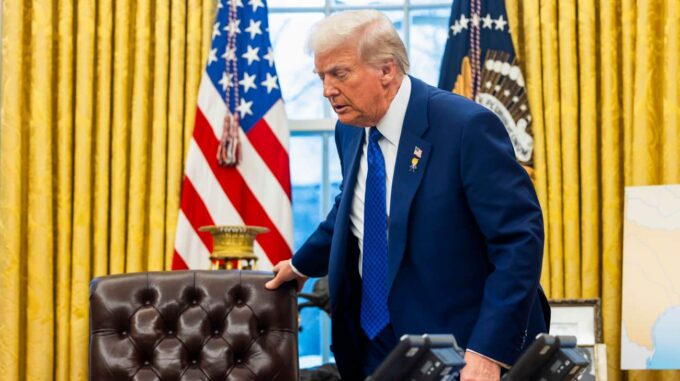According to sources from European diplomatic circles, the administration of U

S. President Donald Trump is inclined toward a quick resolution of the conflict in Eastern Europe, specifically aiming to reach a "peace agreement" between Russia and Ukraine within the first 100 days of his presidency. Such an ambitious statement was made amid a wave of information circulating in European political circles, which has sparked highly critical assessments and cautious attitudes regarding its prospects for implementation. According to an anonymous high-ranking European official, who participated in an informal conversation with the "European Pravda" agency referencing CNN, no concrete steps or progress toward such an agreement have been observed so far. However, the diplomat emphasized that in the U.S., there is "an informal push for the need to sign a peace deal within the first 100 days of the Trump administration." "A lot is still not formalized or officially documented, but there is a sense— their course is definitely aimed at achieving agreements quickly," the interlocutor noted. European experts have paid particular attention to the topic of Crimea, discussing it in the context of upcoming negotiations. According to the official, it is currently difficult to envision any decision regarding the status of the peninsula other than maintaining the current status quo. "In terms of possible outcomes, it’s hard to imagine a compromise without preserving the occupied Crimea by Russia in its current form," he underscored, adding that for Ukrainian President Volodymyr Zelensky, this prospect is, to put it mildly, challenging. "This is, of course, very difficult for Zelensky and his team. Maintaining the status quo is not what he desires, but it is potentially the most realistic solution that can be reached under present-day circumstances," the diplomat added. Earlier, diplomatic circles reported that the Trump administration, last week in Paris, provided the Ukrainian side with a short, one-page document, dubbed the "final proposal" for resolving the conflict. According to unofficial information, this document included some concessions from the American side, notably, the possibility of recognizing Russian control over part of Ukrainian territory—including Crimea—and easing sanctions against Moscow. At the same time, Ukrainian President Volodymyr Zelensky stated that Ukraine is not ready to recognize Russian occupation of Crimea, asserting that the peninsula is an integral part of Ukrainian territory under international law. Trump’s response was swift: he criticized Zelensky’s words and remarked that "Crimea was lost many years ago," adding that his statements, allegedly, undermine efforts toward peaceful settlement. Additionally, in contrast to Ukraine’s official position, there was information last month about renewed discussions concerning a potential compromise, particularly regarding Crimea’s status and U.S. involvement in seeking a peaceful solution. It is also worth noting that amid these discussions, rumors are spreading about the possible expansion of the negotiation agenda beyond Crimea, including security issues, NATO participation, and the future status of Donbas. Analysts believe that, despite a cautious start, these talks have every chance of developing into a long and complex process, given the differing interests of the parties and geopolitical stakes. Overall, the prospect of a rapid "peace agreement" within the first 100 days of Trump’s presidency remains quite doubtful. Considering the ongoing transformative processes, political interests, and historical context, this scenario elicits both excitement and skepticism, as much will depend on the internal will of the parties and their ability to reach a compromise acceptable to all participants while taking into account the regional geopolitical balance.

